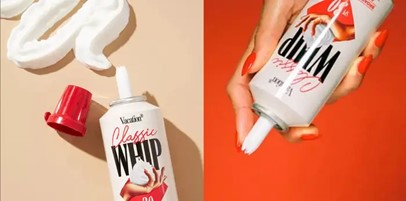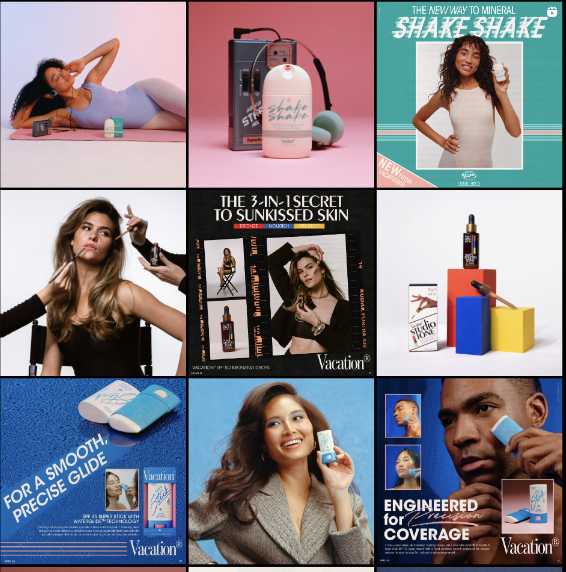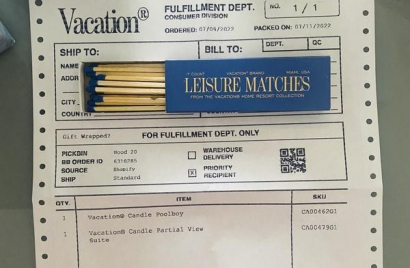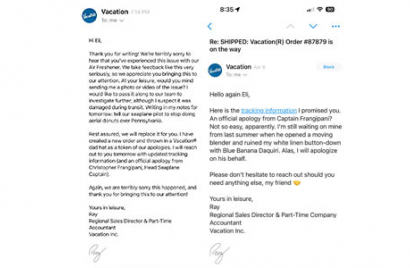
Supporting women through the messy middle of their careers
International Women’s Day may well be over, but progressive agency leaders remain focused on supporting women at every stage of their careers.

Dan Salkey shares how Vacation Inc. follow an entertain or die strategy through the line in a challenging media ecosystem

Today, atomised attention spans, the rise of the ad blocker and the democratisation of content mean the ‘old way’ of brand building is being challenged.
Over the past year my company has been casting an eye over the brand landscape and crunching the numbers on a new class of brands defying the odds and winning Share of Voice (SOV) based on creativity, innovation and entertainment. In other words, these brands follow an ‘Entertain or Die’ strategy.
Vacation Inc. is one of those brands. The 80s-inspired sunscreen brand placed 15th in our Entertainment Index and outcompeted Neutrogena for earned and owned Share of Voice, a market-leading competitor with more than quadruple the marketing budget.
Its a fantastic example of a modern-day entertainment brand as its unique visual and tonal direction follows the team’s marketing not just in above-the-line comms but through the line.
As part of our research we interviewed Lach Hall, Vacation Inc.’s Executive Chair of Marketing. With his insight and our analysis, we can see how Vacaton Inc. ‘Entertain or Die’, through the line.
“We had the idea for the brand world before we even knew what product would fit it.” - Lach Hall
“People ask us what our TikTok strategy is. Well, it’s making a whipped cream sunscreen product which is shareable anywhere. Creativity applied to product is at the heart of what we do.”
Much of Vacation’s brilliance stems from a super distinct brand world which permeates everything from their website to their advertising.
If top-of-funnel comms is all about building mental availability then Vacation Inc. do that through an 80s-inspired, nostalgia-driven visual identity that touches every aspect of the brand - not least product.
Using its product as advertising is probably the most interesting example of this entertainment strategy leveraging a ridiculous amount of earned attention. The whipped cream sunscreen not only serves as a sell-out product but innovations like that tell the story of the brand and drive shareability, in turn driving consideration and purchase of their core products.

It’s distinctive, it’s consistent and it makes the brand relatively differentiated from their competition.
“The tone of voice is even harder, it’s a bizarre business formal way of communicating. The whole character is based on a style that [our company] openly jokes around with. It’s the spirit of the 80s corporate salesman. We take the business of sunscreen seriously. Business formal in our delivery.”
- Lach Hall
If mid-funnel comms is all about continuing interest and consideration after somebody has been drawn into the brand then Vacation’s social feed and email marketing are best-in-class examples of how to do so whilst maintaining an entertainment-first approach.
Their feed is a carefully manicured 80s smorgasbord with each image and caption telling a story about the brand, with product featuring heavily, but being largely incidental. The feed is all about immersing people in the ‘good life’ in an intoxicating fashion.
Similarly, their email marketing is second to none. Email is so easy to get wrong and by that I mean it’s so easy for brand’s to treat it simply as a sales tool. It’s not, it’s a storytelling tool - and Vacation Inc. understand that intimately. This is a fantastic breakdown of over 155+ of their emails but the main takeaway is that they treat each one as a mini brand story. For instance, an FAQ about how to take sunscreen (a supposedly boring best practice piece) becomes “The Connoisseur’s Guide to Poolside Lounging”.

An entertainment-first strategy in the mid-funnel is about building consideration for products through the lens of the brand story and generally building a desire to be part of this brand world.
“Every single touch point transports you to a vacation start of mind. People in marketing often think about comms because it’s all they’re allowed to touch but imagine putting that thinking further upstream into product or even downstream into customer service.” - Lach Hall
Finally, we get to the bottom, like that Drake song but in reverse. Many have argued that bottom-of-funnel, or CX as some have sexily rebranded it, is the future of brand building. This is as traditional media becomes more and more expensive, it makes more sense to use loyalty mechanics and brand experience to turn customers into loyal brand advocates.
I’m not sure I totally agree, you’ll always need new buyers (see Byron Sharp), but embracing CX is definitely smart. Embracing it in an entertainment-first way, like Vacation Inc., is genius.
Two brilliant examples of how they see bottom-of-the-funnel comms as another way to entertain with their brand story whilst also driving loyalty are their packaging and customer service.
A receipt doesn’t feel like a piece of media you can or should invest in but Vacation Inc. yet again turn it into a creative surprise and delight opportunity for customers. Printed on 80s-style dot matrix paper and complete with a suave set of branded matches they somehow make a receipt shareable.
Even when people have a problem with the brand, say a damaged product, it becomes yet another chance to entertain. The screenshot below shows how customer service reps are trained to talk in the tone of the brand whilst dealing with customer issues. It’s a fine line but one they tread like a tightrope walker in Cirque Du Soleil.


One of the research findings from our report Entertain or Die actually showed that it was easier for brands in ‘boring’ or low-interest categories to execute an entertainment-first strategy. I think the same is true for boring or low-interest marketing channels, bottom-of-funnel is a brand equity opportunity.
I want to leave you all with a final quote from Lach Hall which sums up how you as a brand leader need to be thinking to adopt an entertainment-first strategy, and ultimately reap the reward of creativity in your business:
“How do you scale something that is so curated? It is like an artist's vision. We’re looking at luxury brands a lot as a way of scaling [our creative vision]. LVMH put the creative director in partnership with the president so creative is actually a part of the C-suite.”
Creativity is wasted when it’s used only to write ads. Creativity is your unfair advantage when it sits close to every decision you make as a business.
Dan Salkey is Strategy Partner at °Small World, a creative consultancy that curates unique creative super teams for every brief. As a result, they have a roster of unorthodox creative talent, perfect for building brands which entertain and steal Share of Voice.
Looks like you need to create a Creativebrief account to perform this action.
Create account Sign inLooks like you need to create a Creativebrief account to perform this action.
Create account Sign in